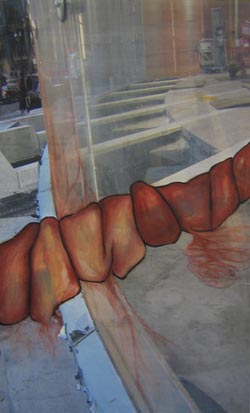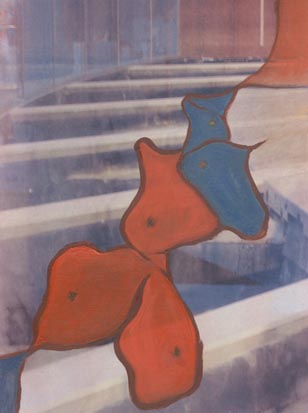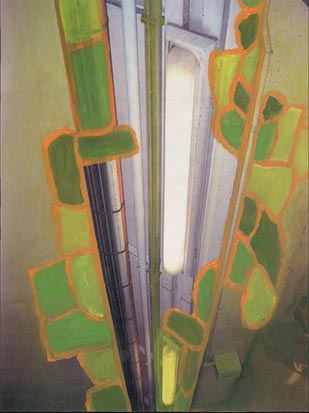
This work contrasts architecture and references to human physiology. Cellular and organic structures mirror and form ambiguous interactions with the structure of buildings. I wish to impose the messy functions of biology on these objects and to show that the structures created by humanity are also involved in the processes of birth and death. The liquid quality of paint signifies the viscosity of the body and its functions along with the fluidity of time and energy. Digital photography is used to show a contrasting linear aesthetic that exposes singular moments in the existence of objects that are taken for granted. I invade the sterility of these architectural spaces with biomorphic forms hoping to provoke the viewer into seeing the life that I see there.
|
|
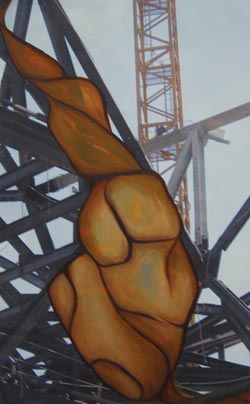 Insertion #2 |
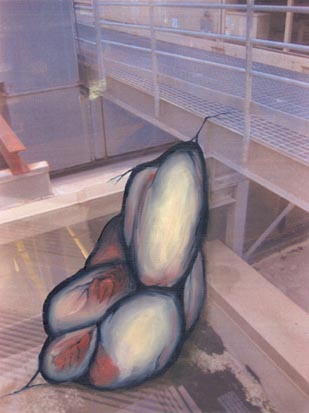
Insertion #3
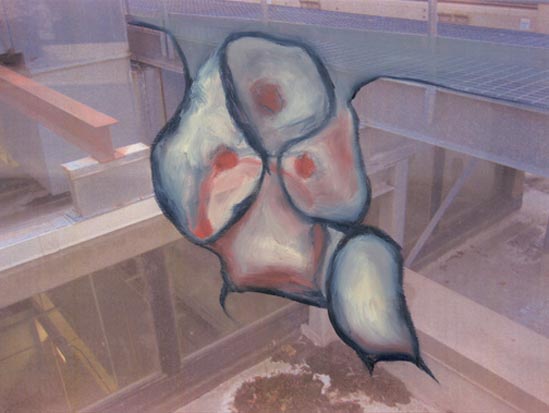
Insertion #4
The shapes of cells are intuitively intertwined with the shapes of architecture. I either start by painting a cluster of cells and finding a space that I would like to fit that formation into or I take an architectural photograph and pick out cells from a reference that I then work into the space. The former process is used in the "Insertion" series, where the biological forms act as the reverse of prostheses. Plastic shapes that are used to mimic body parts belong neither to the body nor to the material world. My organic forms are similarly alienated with the intention that their insertion be uncomfortable and, at times, grotesque. I want the viewer to feel that they belong in their environment, but also to wonder why they are there. By infusing the biological within the architectural world, I want to force body-image on objects that we do not associate with life.
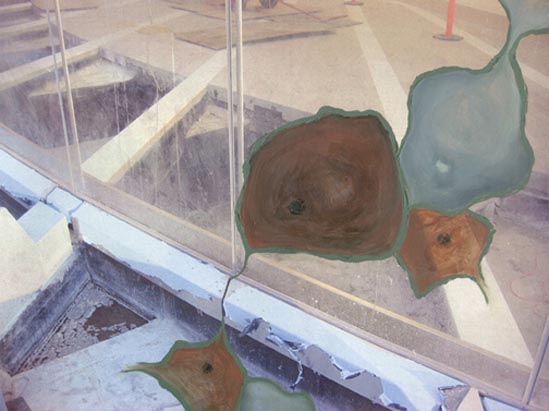
Structure #1
The "Structure" series uses the latter process, beginning with the image of a building. As I work the cell formations into the architectural structures, I am amazed at the similarities and the coincidental alignment. The proportional aspects of structures must insure that they do not collapse into themselves whether in biology or architecture. How much of our design reflects the structure of nature?
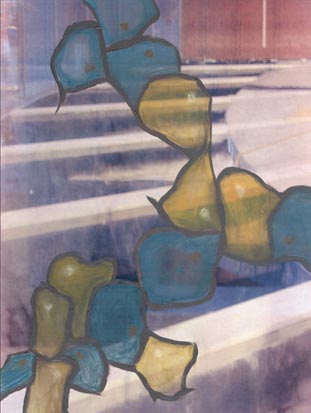
Structure #2
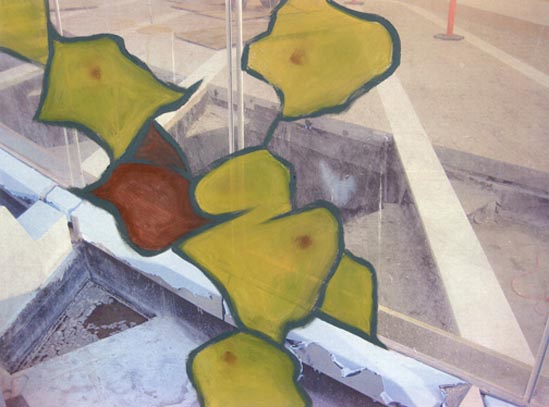
Structure #3
|
|
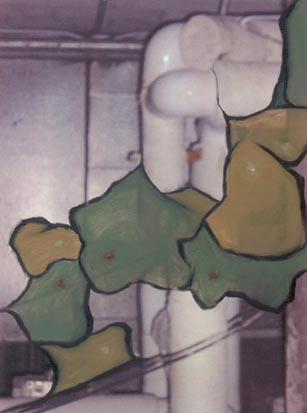 Structure #5 |
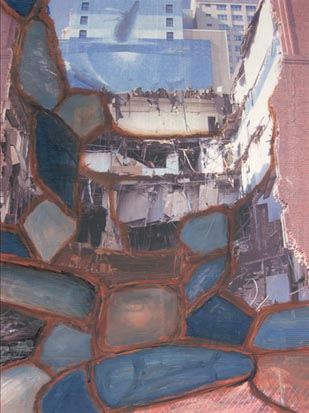
Structure #9
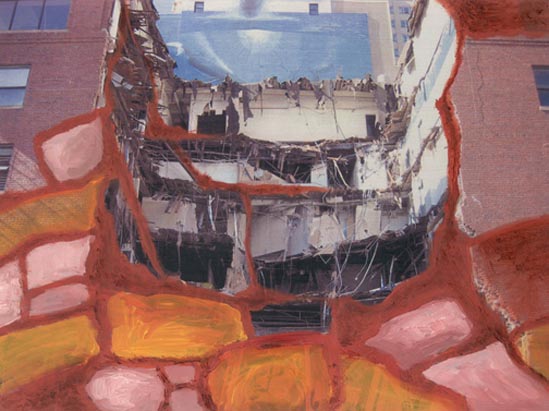
Structure #10
|
|
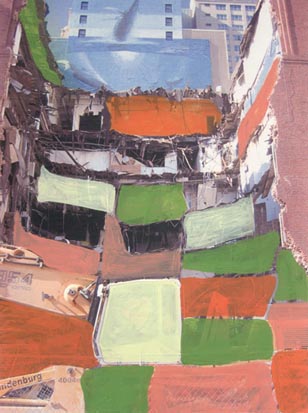 Hard Cell #1 |
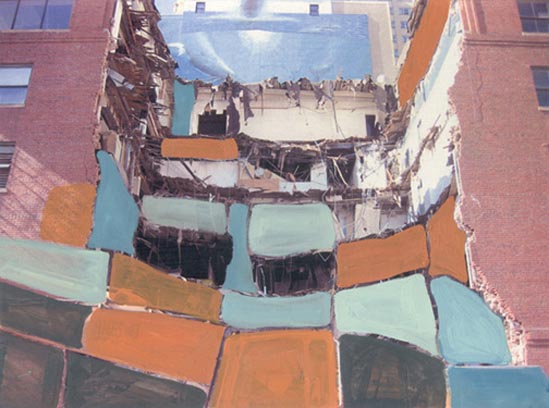
Hard Cell #2
I want my paintings to show the merging of the human body with the rest of the world. We are so afraid to be a part of nature that we disguise our bodies, hiding all evidence of animal behavior. We make our bodies into buildings, insulating and isolating ourselves. I want people to see that they are connected with every piece of the Earth. Every element, every raw, animal instinct and every piece of wood or metal that builds our structures and tools is a part of the same life force. My hope is that people will see their environment in a new way when they step away from my work; that they will find the notions of life, value and energy to be intrinsic in the world outside of humanity.
